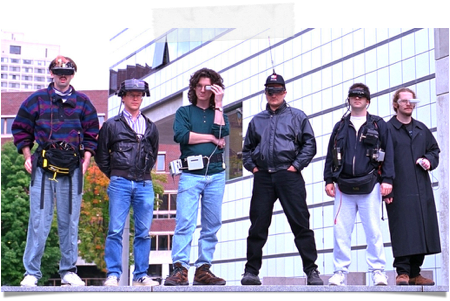In the early 70s, Intel innovated. Gordon Moore led the bold shift from storage to microprocessing and in the process completely redesigned their business from the ground up. Half a century on, we still feel assured with that ‘chip inside’.
But not every innovation needs to be on such a grand scale as Intel. Incremental improvements like tweaking an existing product, improving the way teams work, embracing a different process or technology — can all help progress a company in creating new value. The trick to get started is to answer one simple question: is it safe to try?

Jeff Bezos famously approaches decisions with the understanding that many decisions are, “Reversible two-way doors.” If you walk through the proverbial door and don’t like what you see, you can simply turn around. No harm, no foul.

If the decision is not final then it is safe to try. Adopting this type of mental model is necessary in order to gain valuable feedback and insights to further act upon. Both experimentation and failure are part and parcel of playing the innovation game today.
The other thing to appreciate is the mindset of the perfectionist runs antithesis to the innovator. There is no such thing as the right strategy — there is only a better one over another. As author David Kadavy neatly puts it, “If we never get started, we never get good, and you can’t get good without first being bad.” The point is to first try, then learn, and be sure you have mechanisms in place to measure and improve.
Will it Harm the Company?
Suppose your company is thinking to become a paperless office? Perhaps it’s a law firm and there is resistance by lawyers to abandon an age-old practice. One ‘experiment’ would be to communicate to all clients that there is going to be a phased move to a paperless office because it; meets legal requirements, documents are more secure and accessible in the cloud, it saves significant costs, and is better for the environment.
Then you hang tight and wait for any objections. Presumably, most lawyers would be willing to innovate in this regard if their clients were on board. If not, then the status quo can be maintained.
What Will We Learn?

The shoe e-tailer Zappos is always trying out different things. Their final destination is to deliver customer happiness but the road there has mostly been through iterating the way they organise. Indeed, their infamous move to self-management, or Holacracy, was not without its hiccups (a mass exodus of nearly 29% left the company). Yet, they continue to meet targets to satisfy Amazon, the behemoth that bought them in 2009. They have also become the flag-bearers of the safe to try movement — inspiring many other leaders to experiment with self-management.
Ascompanies get bigger, they typically get dumber. They are less innovative and more bureaucratic. Theoretical physicist Geoffrey West explains that if only we were to model our companies on our cities — they might actually get smarter as they scale. But it’s only by continually asking, ‘is this safe to try?’ that we might wizen up.
Originally published at Medium

